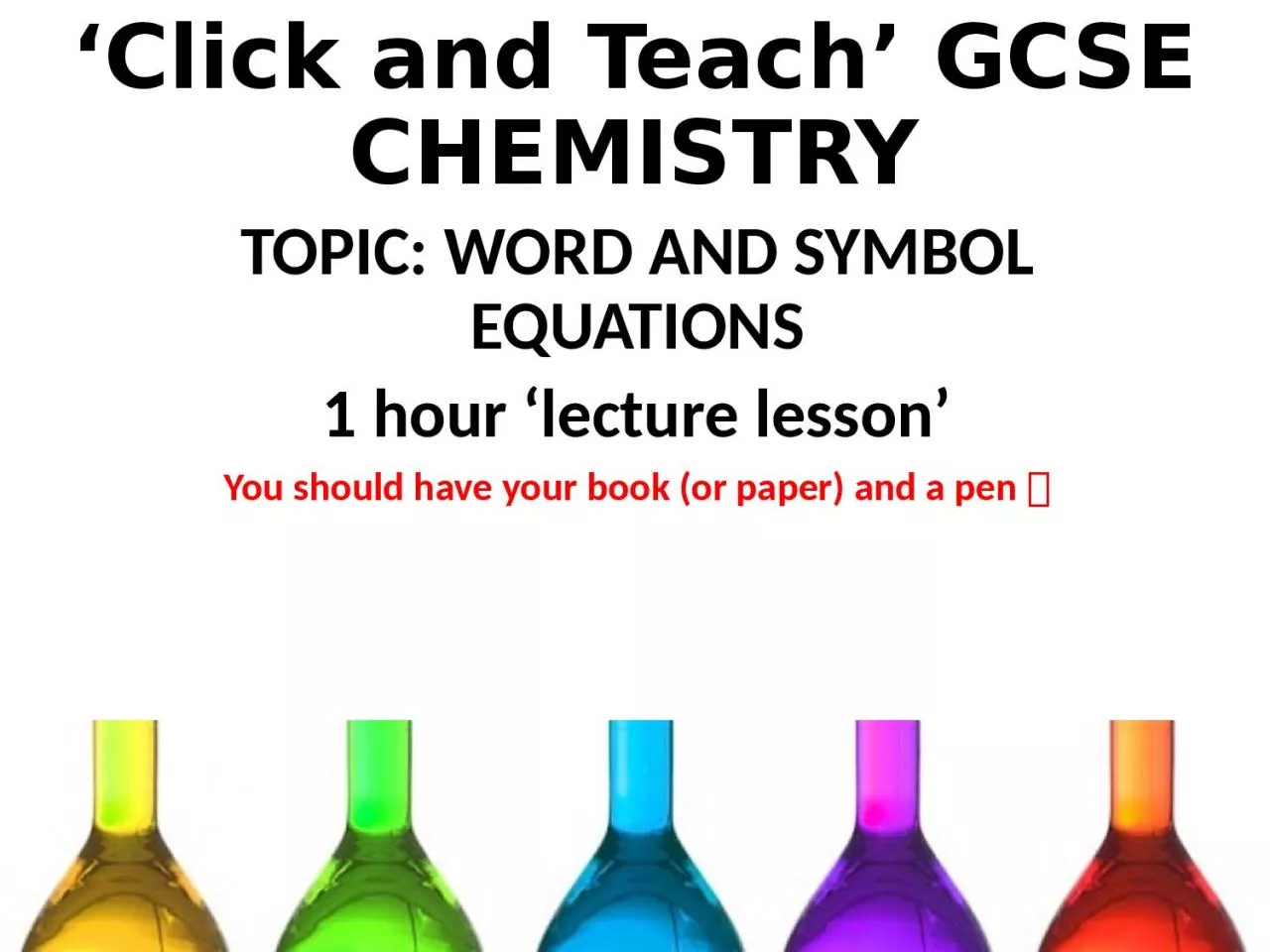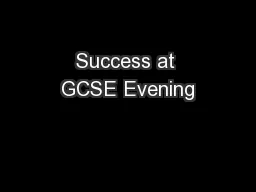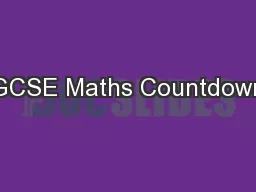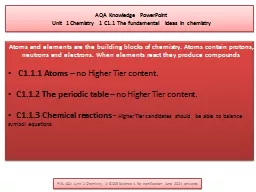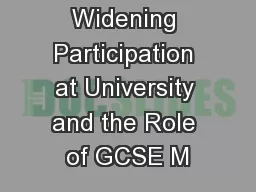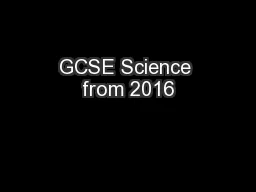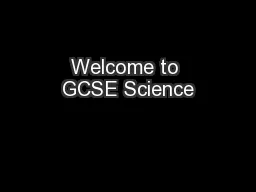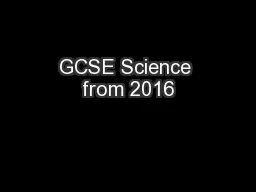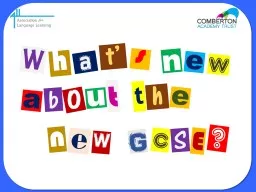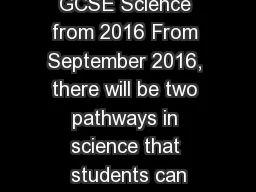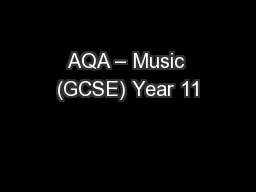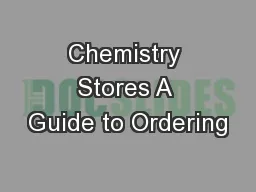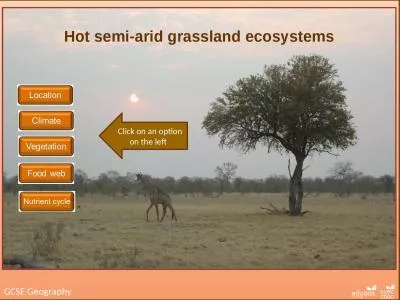PPT-‘Click and Teach’ GCSE CHEMISTRY
Author : alis | Published Date : 2024-01-29
TOPIC WORD AND SYMBOL EQUATIONS 1 hour lecture lesson You should have your book or paper and a pen Aims of the lesson To know what reactants and products are
Presentation Embed Code
Download Presentation
Download Presentation The PPT/PDF document "‘Click and Teach’ GCSE CHEMISTRY" is the property of its rightful owner. Permission is granted to download and print the materials on this website for personal, non-commercial use only, and to display it on your personal computer provided you do not modify the materials and that you retain all copyright notices contained in the materials. By downloading content from our website, you accept the terms of this agreement.
‘Click and Teach’ GCSE CHEMISTRY: Transcript
Download Rules Of Document
"‘Click and Teach’ GCSE CHEMISTRY"The content belongs to its owner. You may download and print it for personal use, without modification, and keep all copyright notices. By downloading, you agree to these terms.
Related Documents

